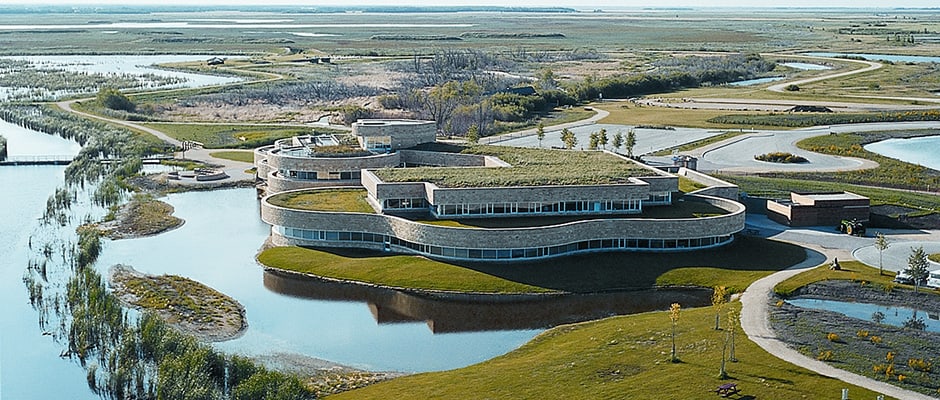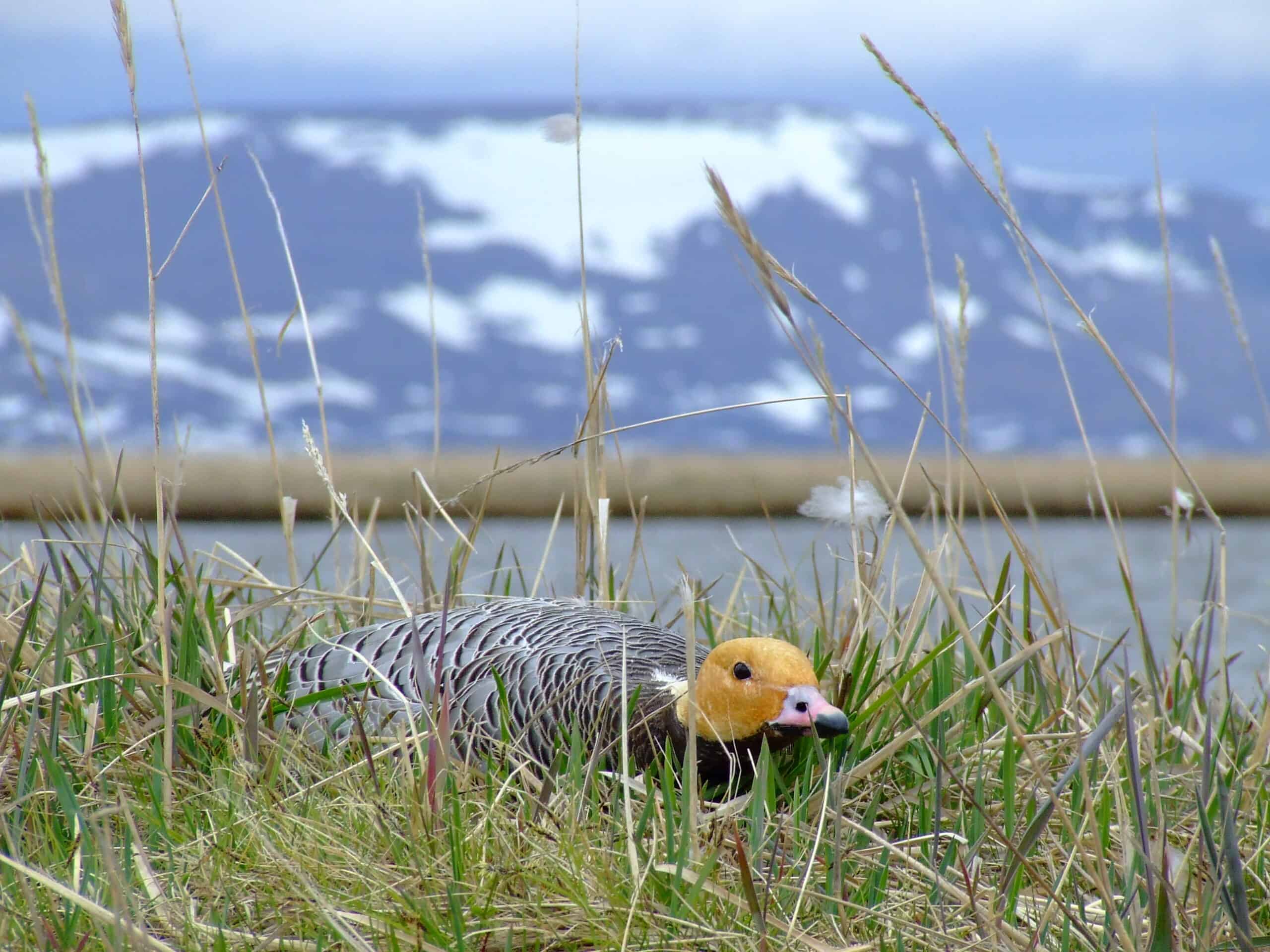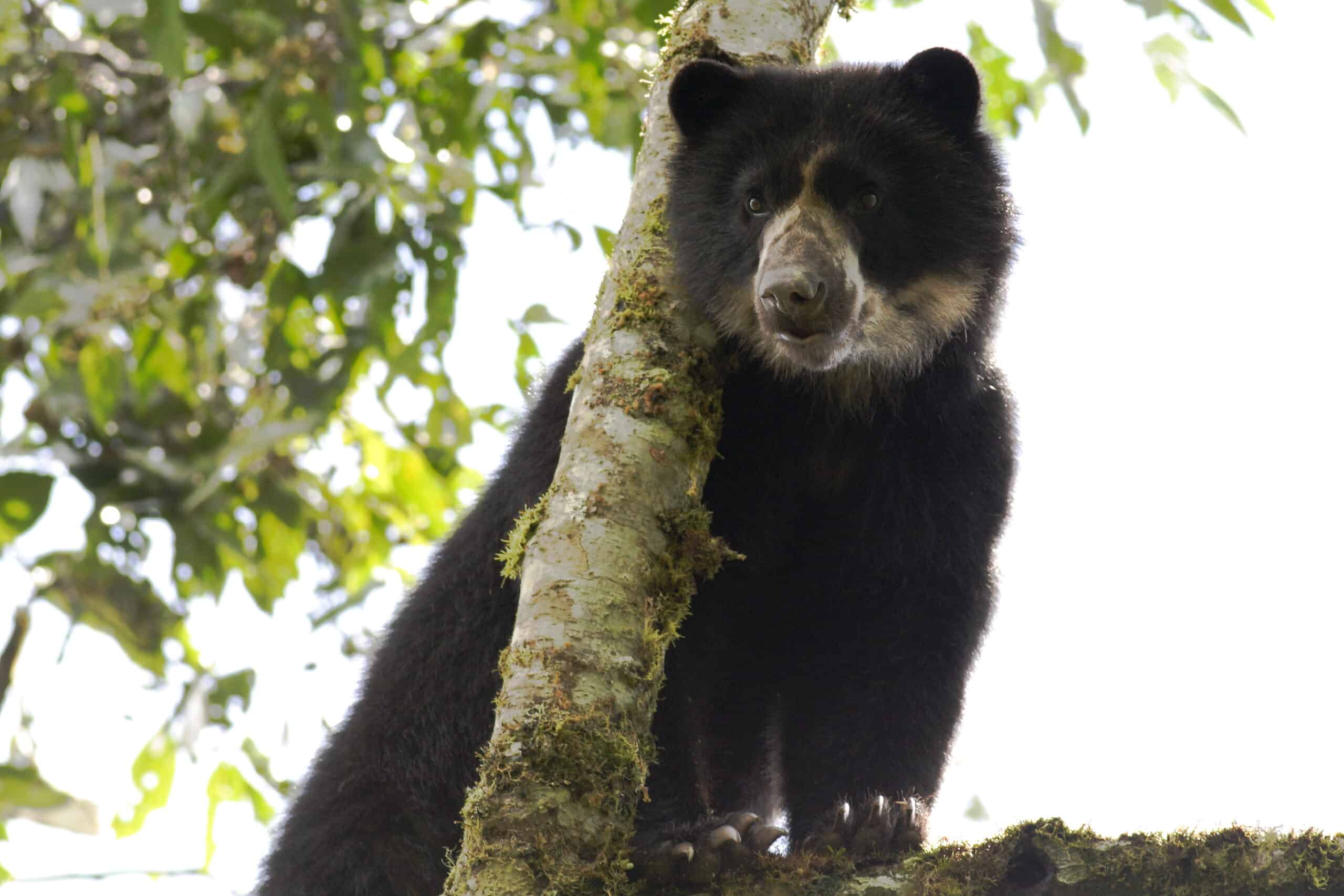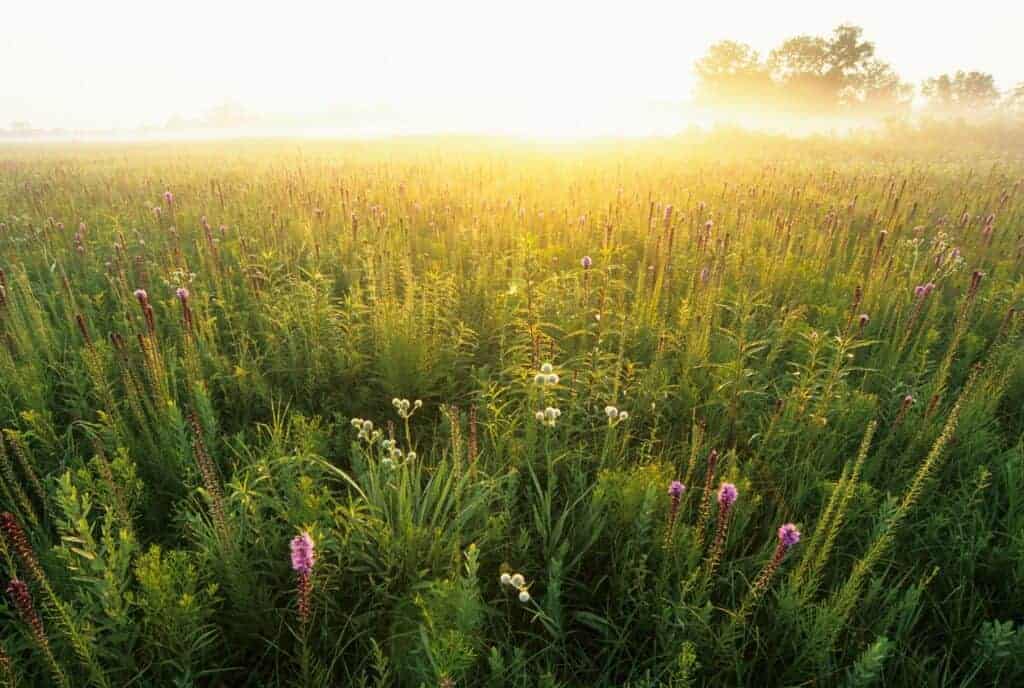Share this article
Exploring the Wetlands at Oak Hammock Marsh
Join The Wildlife Society’s field trip to Oak Hammock Marsh during the 2015 TWS Annual Conference. Learn more about the educational and professional networking opportunities available to you at this year’s Annual Conference at our conference website.
There may not be many obvious connections between Manitoba’s Oak Hammock Marsh and Veracruz, Mexico.
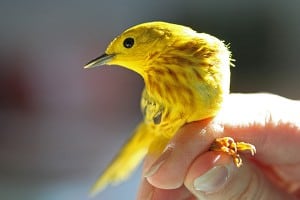
A yellow warbler. Visitors to the center sometimes have the opportunity to release research birds like these by hand.
Image credit: Oak Hammock Marsh Interpretive Centre
Unless you’re a yellow-throated warbler (Setophaga dominica), that is.
The warbler was one of the birds captured in 2010 by Paula Grieef and other researchers in routine bird tagging projects organized in the expansive Wildlife Management Area (WMA) just north of Winnipeg.
“To find out that it came from Mexico was pretty rare,” said Grieef, “That’s a phenomenal chance.”
Grieef is a resident naturalist at the Oak Hammock Marsh Interpretive Centre — a sleek building housing the Canadian headquarters of Ducks Unlimited. But Grieef recorded the information and sent the bird off, just like she and other staff often do with the help of visitors interested in literally lending a hand to bird research.
A couple of hundred years ago, wetlands stretched roughly 300 square miles between current day Winnipeg and Lake Winnipeg to the north. But the provincial government had a policy of giving away free land to anyone who drained a dry plot, and the wetlands shrank to nothing more than a few square kilometers, according to Jacques Bourgeois, marketing and promotions coordinator for the Centre.
Some of the land was eventually set aside and today the WMA occupies around 14 square miles of space, with 7.7 square miles of open marsh accessible by wooden walkways or through canoe trips. Different areas of the marsh are alternately flooded and left to dry out in order to approximate the kinds of conditions that occurred there before much of the marshland was dried out to make way for human development. In fact, it’s the 18 kilometers of trails that act as dykes, allowing cattails to regrow in dry areas after the muskrats (Ondatra zibethicus) eat them all in the wet areas.
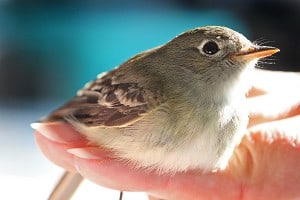
Alder flycatchers are one of the roughly 300 species of birds found in Oak Hammock Marsh.
Image Credit: Oak Hammock Marsh Interpretive Centre
Even the building of the Interpretive Centre is made to approximate the area — the tinderstone design seems to blend into the mirror-like wetlands around it while many birds nest on the roof of the building. Bourgeois said that during the spring under the building near the water, “you look up and find little ducklings falling from the sky.”
In fact, the area plays host to more than 300 species of birds, as well as a large colony of Richardson ground squirrels (Urocitellus richardsonii), coyotes (Canis latrans), badgers (Taxidea taxus), and a few snakes and amphibians.
During the field trip to Oak Hammock Marsh organized at the Winnipeg conference this year, members of The Wildlife Society will be able to observe how birds are caught in mist nets, carefully removed, then weighed, banded and tagged. Some members may even get a chance to hand release the birds. There will also be opportunities to travel by canoe through the wetlands and check out the exhibits in the Interpretive Centre. The latter is also outfitted with an observation deck that gives viewers an expansive sense of the beauty, sights and sounds that Oak Hammock Marsh has to offer.
To learn about the other field trip opportunities at our Annual Conference, visit the field trips page of our conference and our feature articles on FortWhyte Alive and the International Polar Bear Conservation Center.
Header Image:
The Oak Hammock Marsh Interpretive Centre sits in the middle of the 14-square mile Wildilfe Management Area. Several exhibits are inside.
Image Credit: Oak Hammock Marsh Interpretive Centre



